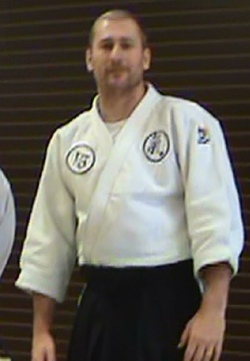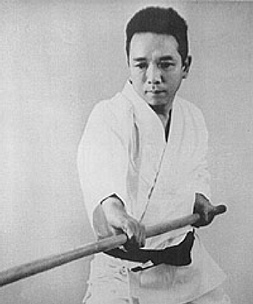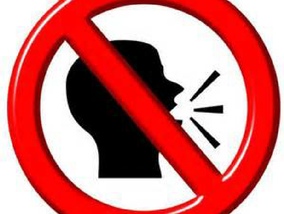


Pace of Play ~ Maximizing Training Time
By Jonathan Wilson
24 March 2015
One of the things I believe in firmly is the notion that some people accomplish more in 1 hour than others can accomplish in 8 hours. Have you ever noticed this? Assuming you have noticed it, what do those who accomplish so much do that is different than those who do not accomplish nearly as much?
Here’s my hypothesis. I think they accomplish more because they are able to synthesize information better. When I was an athlete, I was a huge fan of maximizing meaningful reps because I believed it help me master concepts in the fastest means possible. Later as I transitioned into coaching I built my practices on the same “max reps” concept. Give me 90 minutes and I’ll make sure you get 2,000 - 2,500 individual (and thematically related) touches on the soccer ball. With those types of numbers, you can’t help but improve ~ and quickly.
One of the ways I was able to maximize my training outcomes was my thematic training progressions (which I discussed at length in an article titled, “Training Progressions” ~ which you can read by clicking here).
Another way I was able to maximize my reps was to work on my team’s Pace of Play during practice. The idea of Pace of Play is to work as hard as possible in the limited time you have to ensure that you maximize your meaningful reps. This entails a great deal of forethought on your behalf, has a built in fitness component to it, and gets results quickly.
Consider the following comparison.: the game of soccer is a 90 minute game, broken down into two 45 minute periods separated by a 10 minute half time. There are no timeouts, and coaching input during the match is extremely limited. In my mind, a street fight operates in much the same fashion. In fact, a soccer match probably has more in common with a street fight than MMA or boxing does ~ with regard to how things work regarding time. The fight, just like the game, simply does not stop.
Along those lines, it is safe to say, fitness is expected, and necessary?
I’d submit that the answer is a resounding “yes,” and this notion seems to be reinforced in our warm ups which include various strength and conditioning exercises. These warm up movements are somewhat unique to our strain of aikido, as all of the Ueshiba influenced aikido dojos I’ve visited have very little going on in the way of physical fitness components to their warm ups.
That said, I find that once the training begins, Ueshiba influenced aikido dojos seem to work at a faster pace than NGA dojos. They simply train faster ~ maximizing reps, and building a training based physical fitness component into their training sessions that mimics the pace of a real fight.
Personally, I prefer faster speeds of play because I like the idea of maximizing my repetitions and developing my skills quicker than the next guy, and I see extreme value in training at a similar speed I might see in an actual fight. Assuming you agree, the next logical question is, how can we play faster in order to get better quicker?
I’ve got a few ideas ~ of course none of them should be regarded as “official” Nihon Goshin Aikido positions or beliefs.
1. First off, once you get into Match Related or Match Condition scenarios (click here to figure out what I’m talking about) as uke ~ your attacks should be continuous. This is very important to mimic the pace of play a fight might have when you are working on applications, and in free style randori situations. Look at the video to the top left to see an example of this pace of play. Note uke’s continuous and resilient attack ~ it is not rushed, but it does allow nage to maximize his reps in a short order. Matching this pace of play would automatically translate into additional repetitions per student, an accelerated learning curve toward mastery, and a general improvement in a student’s aerobic/ anaerobic fitness capacity will also manifest itself.
2. When working on Classical Techniques, the senior belt should do the technique first. In this fashion, the junior belt has something (correct) to mimic. The last thing I as a black belt want to do is stand there for 30 seconds holding on to uke’s wrist while he tries to remember what he’s supposed to do (or some technique he can not remember). When the senior rank holder goes first, it presents the junior belt with a demonstration; an implied “Do it the way I’m doing it” motion. A picture, or a feeling of proper technique, is worth more than a thousand words, so the guy that can do the technique best, should probably do it first. There are definitely some notable exceptions to this idea (preparing for testing, possibly, etc.), but I think this idea is effective generally speaking.
3. Keep talking to a minimum. When it’s time to train, don’t let talking get in the way. I remember one guy, who held a lower rank than I did, used to talk non stop. When we worked together, he insisted on telling me all about the technique we were doing, what made it work, what the commonly made mistakes where, when he learned it, who his training partner was when he learned it, what the weather was like on that day, what happened on the way to work, etc. He’d stand there for the entire practice session and talk your head off if you let him, but all the while, I’m thinking, “Hey man, I just want to train!”
After a few weeks of this, I started to feel resentment towards him when we were paired up because I could NEVER get any work done.
At some point, I decided that when he started talking about stuff that was distracting us from training, I’d say, “Less talking, More training.” And I’d put his arm on my arm and start doing technique without hesitation. I’m not sure if it worked or not, because he never really stopped talking, and eventually, he quit coming to the dojo all together. For all I know, I may have run him off, but I hope not. You have to assume that the student is coming to the dojo to workout right? Sometimes the talking needs to be done at the Wild Wings Cafe after the training session is over. When you have precious mat time available, make the best possible use of it that you can. “Less talking. More Training.”
4. Demo time equals standing around time. As an instructor, this is a tough one, because Demo time IS the instructor’s Training time, but the demos need to be completed as quickly as possible, or your veteran students will become bored because they’ve seen this same demo 100 times, and the new students are generally incapable of comprehending the nature of what you are doing because they are so inexperienced. Overall a long demo just compromises the student body’s training time. It’s probably better to introduce the demo quickly, and with minimal comment and then pair the newer students up with senior students to let them begin the process of unpacking the technique via discovery. Once everyone is paired up, then the instructor might go around and demo the technique to each individual training group ~ so that everyone can experience the technique as uke (which is a cornerstone of the learning process as I see it).
5. Avoid Long Lines (This might mean the Attack Line at the end of class) ~ Now I KNOW I just stepped on some toes (including my own), but think about how badly Attack lines limit your students in terms of maximizing their repetitions. Assuming that the class has over 5 or 6 people in it, it makes sense to break up into two or more attack lines; assuming that you have the space available to do two lines, etc. In this fashion, it might make sense to adapt the Attack line in a way that generates more reps per student in any given timeframe. If our aim is to get students as good as we can as fast as we can, unnecessary time spent waiting in long lines has got to go! Do continuous Uke-Nage randori instead. In this fashion every participant is able to maximize his nage and uke repetitions, and the fitness component (also desirable) will increase also.
So in summing up, and as I used to say so frequently when I was a soccer coach:
“We DON’T have time to stand around and eat a ham sandwich! Let’s Go! Get to Work!”
What say ye?
Want to add to the discussion? Post your comments in the comment box below!

2014 - 2021 ngaexperience.com

If I want to know how your day went (and I do want to know), I’ll ask ~ at the proper time. When it’s time to train it’s time to train.
Master Nara says, “Practice Quickly to Maximize Your Repetitions.”


Not our style, but note uke’s attacking resilience. throughout the demonstration. Uke attacks the minute he is able. In this fashion maximum quality reps for both training partners are established ~ leading to the fastest improvements. When uke is too tired, he takes a break ~ by becoming nage.



Avoid Long Lines..... Better Yet, Avoid Lines Altogether.
This picture demonstrates poor training principles with regard to MAXIMUM reps.
A concept was taught, but the line is WAY too long to allow enough repetitions for the concept to sink in.
The players could triple their meaningful repetitions by having 3 lines.... Or better yet, NO LINES.
As expected, there was no measurable improvement in any player during the training session.